Flight Profile Optimization
Flight Profile Optimization
Product Vision
Collins Aerospace aimed to create an in-flight route optimizer for faster, greener, and more cost-effective flights. In 2019, Collins licensed NASA’s TASAR algorithm, which had shown a 57+ gallon fuel savings and 2-4 minutes of time saved per flight in trials with Alaska Airlines. The goal was to productize the algorithm into an app for pilots, promoting adoption through a seamless user experience across Collins’ Engine Flight Bag (EFB) products.
Product Vision
Collins Aerospace aimed to create an in-flight route optimizer for faster, greener, and more cost-effective flights. In 2019, Collins licensed NASA’s TASAR algorithm, which had shown a 57+ gallon fuel savings and 2-4 minutes of time saved per flight in trials with Alaska Airlines. The goal was to productize the algorithm into an app for pilots, promoting adoption through a seamless user experience across Collins’ Engine Flight Bag (EFB) products.
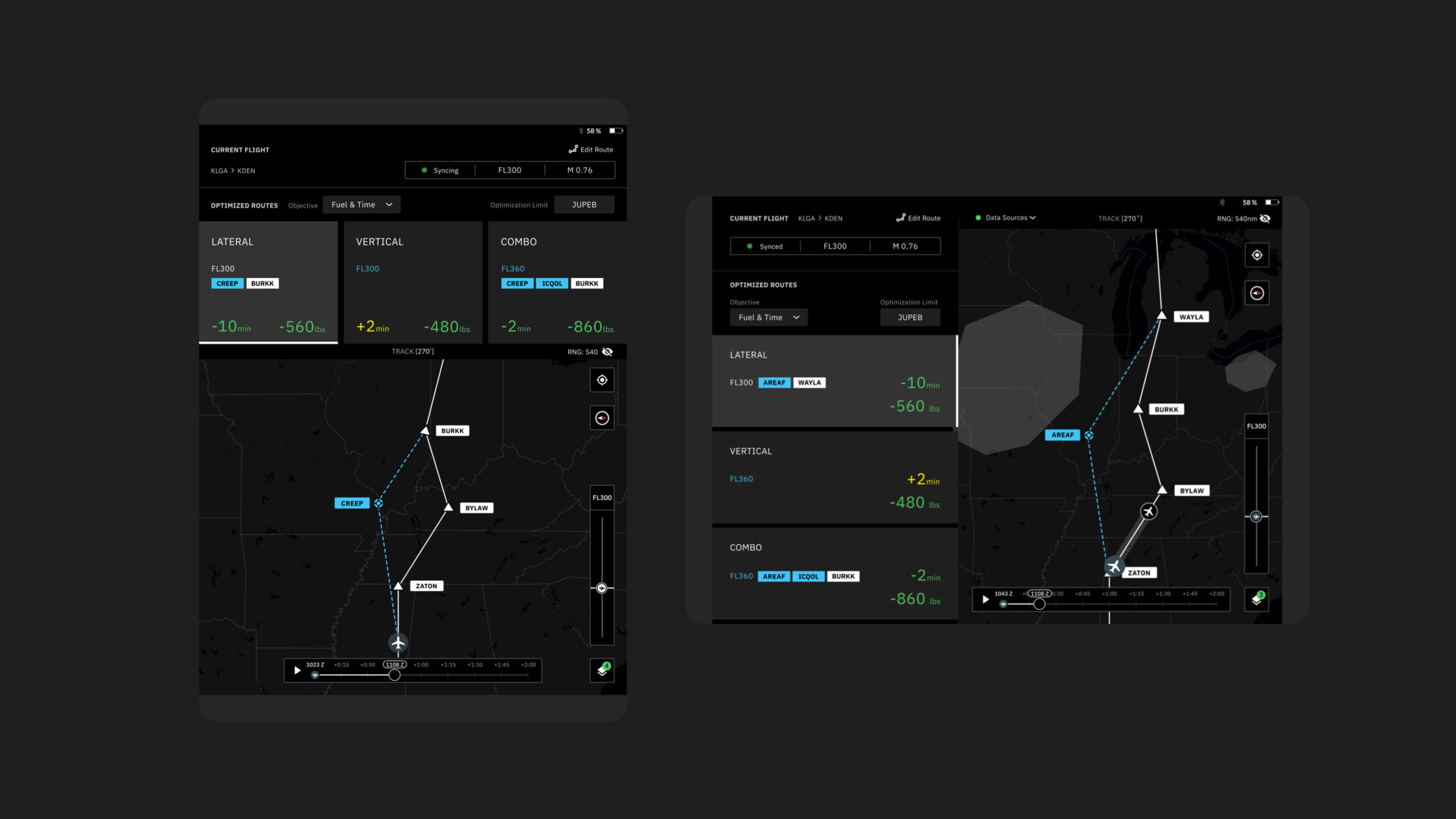
Our small project team included product, research, engineering, and design. As the design lead, I focused on developing the app’s layout, look and feel, and interactions. I also managed another designer and split tasks between us for each sprint.
Our small project team included product, research, engineering, and design. As the design lead, I focused on developing the app’s layout, look and feel, and interactions. I also managed another designer and split tasks between us for each sprint.
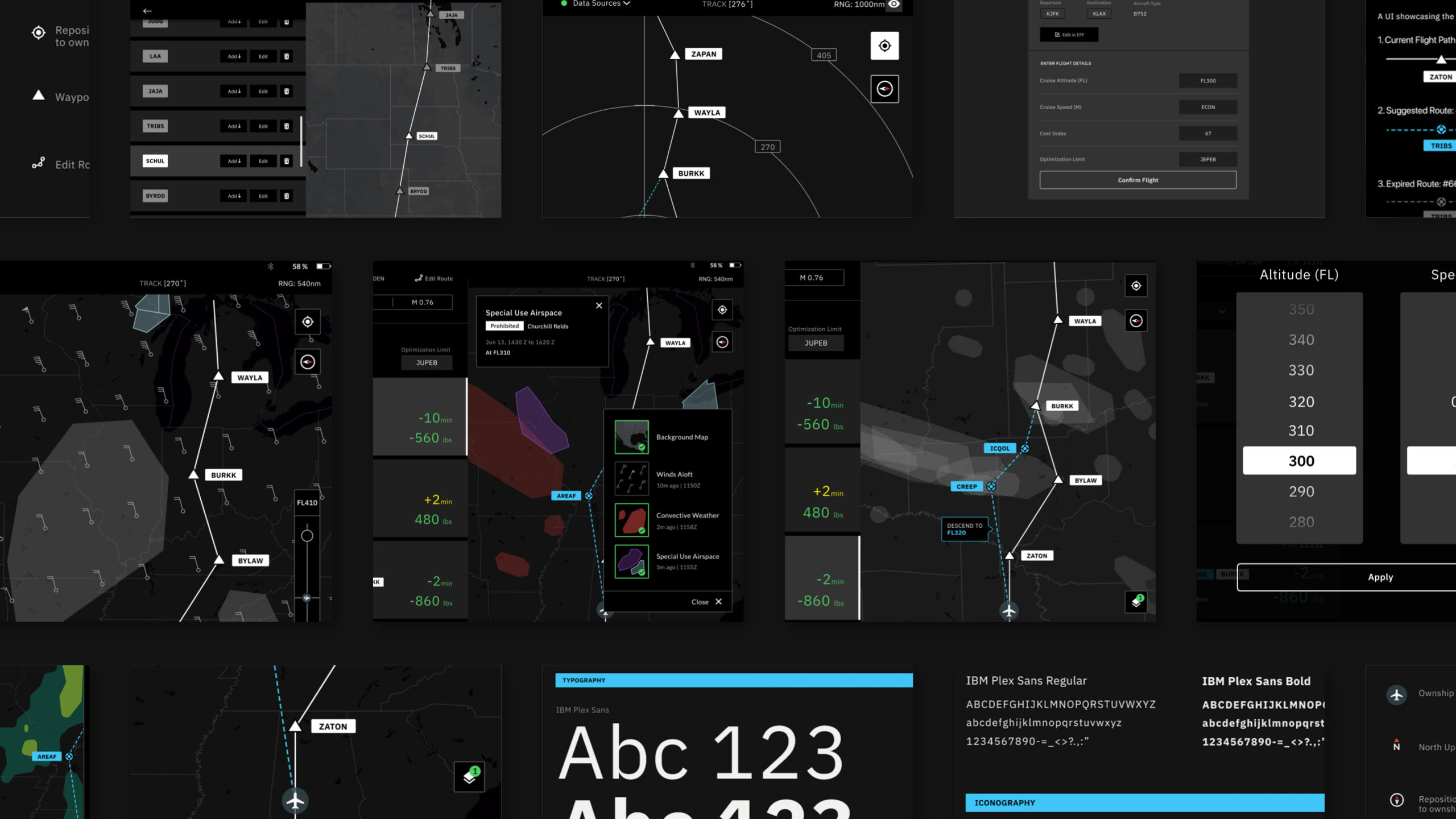
To demonstrate how a re-route (represented by the dotted blue line) would appear in the app, I created a visual overview illustrating the phases of flight, from departure to destination.
To demonstrate how a re-route (represented by the dotted blue line) would appear in the app, I created a visual overview illustrating the phases of flight, from departure to destination.
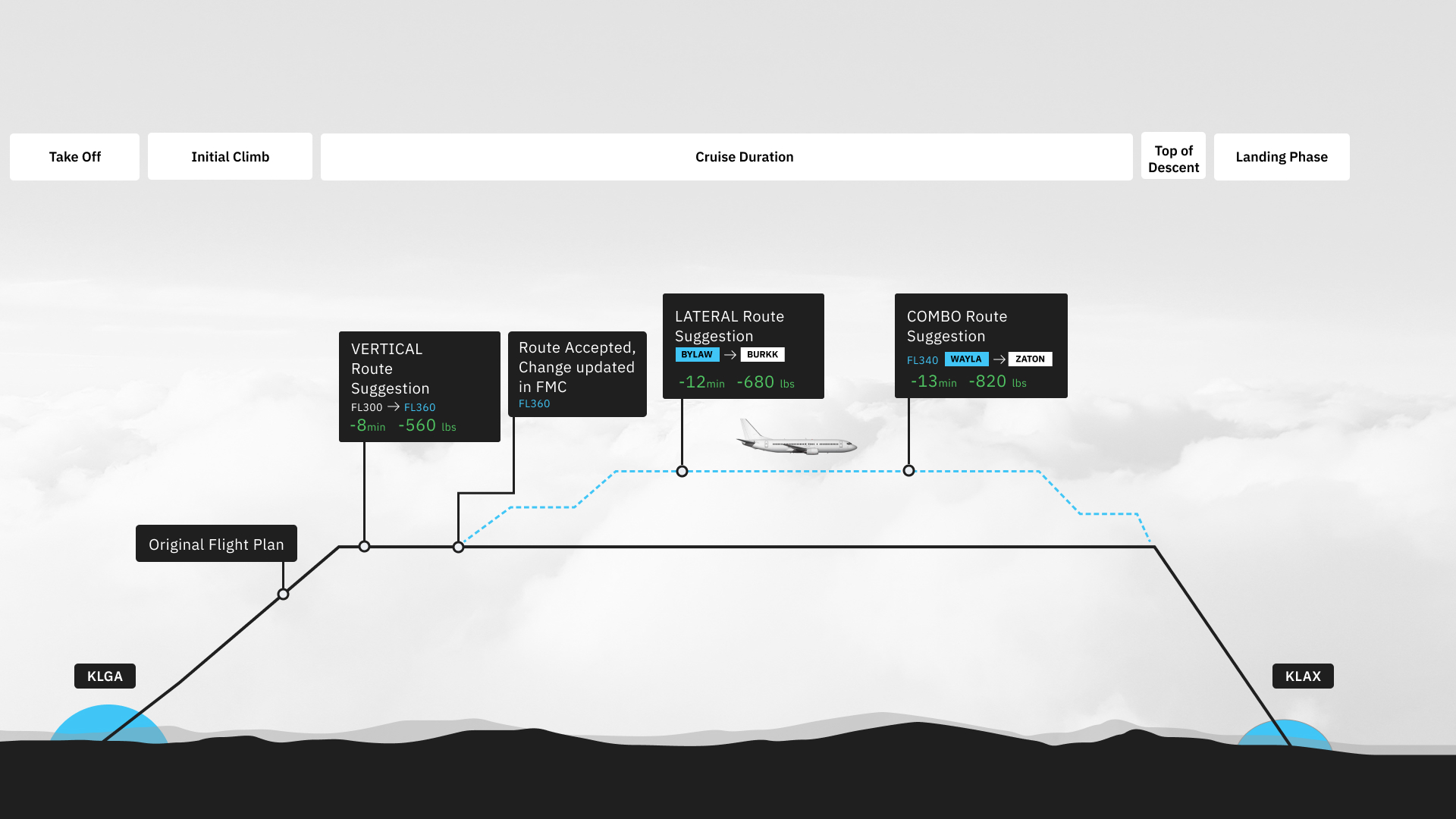
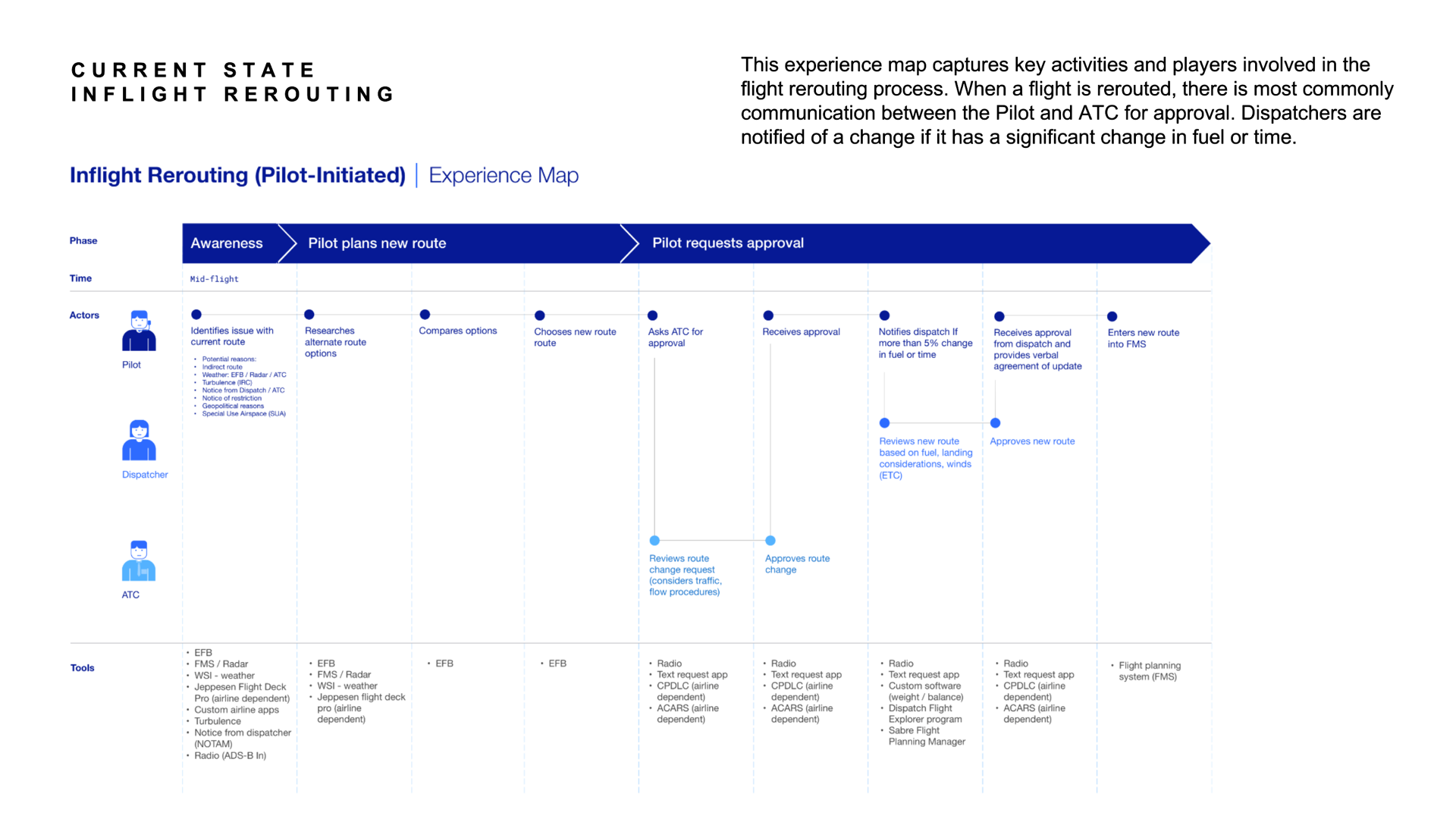
I collaborated with an incredible team to define and develop an experience map, informed by research and pilot interviews. We broke down key tasks, such as flight re-routes, to understand interactions between pilots, dispatchers, and air traffic controllers.
I collaborated with an incredible team to define and develop an experience map, informed by research and pilot interviews. We broke down key tasks, such as flight re-routes, to understand interactions between pilots, dispatchers, and air traffic controllers.
Over the course of the project, our team conducted 31 qualitative interviews and usability tests to validate designs before moving into development. Our key learnings:
Over the course of the project, our team conducted 31 qualitative interviews and usability tests to validate designs before moving into development. Our key learnings:
- Pilots preferred a single app to avoid switching between multiple apps with different UIs.
- Re-route management was cumbersome, requiring pilots to manually input waypoints into several apps.
- Pilots wanted apps to provide contextual information specific to flight phases like takeoff or descent.
- Pilots needed the ability to compare the original flight plan with the re-routed plan.
- While saving time and fuel were important, pilots prioritized safety and passenger comfort.
- FPO received an average rating of 4.8 out of 5 for its usefulness.
- Pilots preferred a single app to avoid switching between multiple apps with different UIs.
- Re-route management was cumbersome, requiring pilots to manually input waypoints into several apps.
- Pilots wanted apps to provide contextual information specific to flight phases like takeoff or descent.
- Pilots needed the ability to compare the original flight plan with the re-routed plan.
- While saving time and fuel were important, pilots prioritized safety and passenger comfort.
- FPO received an average rating of 4.8 out of 5 for its usefulness.
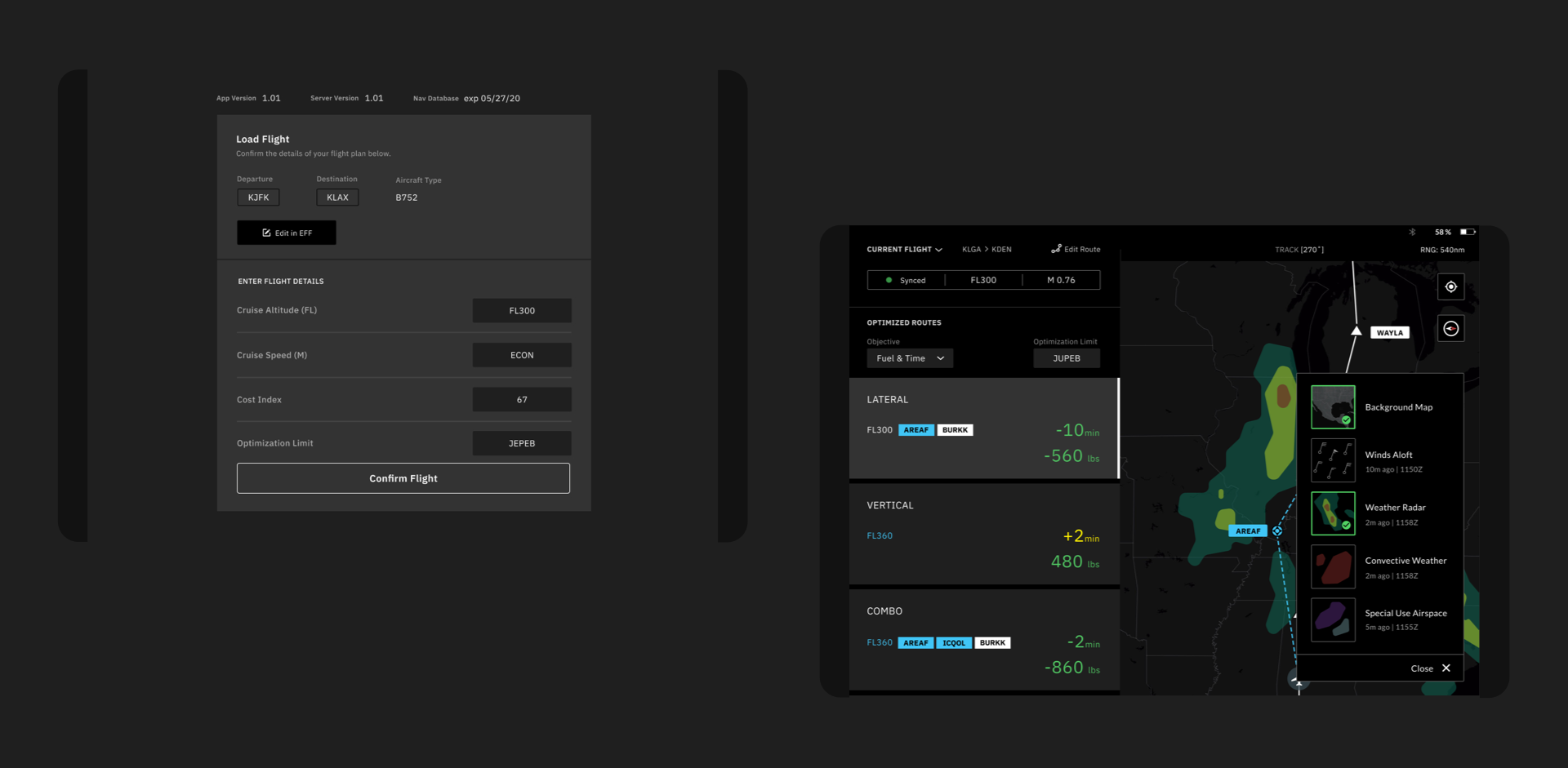
Shown above: [left] Load light screen [right] Expanded layers menu with weather layers turned on
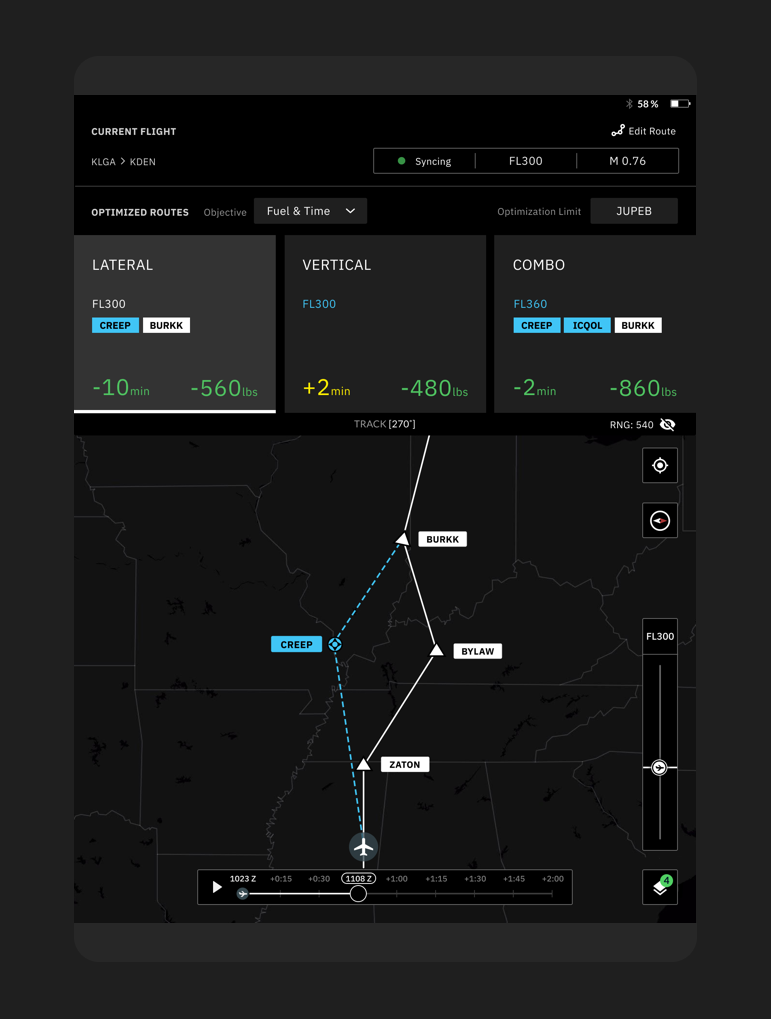
During pilot interviews, we discovered there was no dedicated space in the cockpit to mount tablets, so the flight app needed to work seamlessly in both portrait and landscape orientations. This insight led to the design of a split-screen mode, enabling pilots to view two apps simultaneously.
During pilot interviews, we discovered there was no dedicated space in the cockpit to mount tablets, so the flight app needed to work seamlessly in both portrait and landscape orientations. This insight led to the design of a split-screen mode, enabling pilots to view two apps simultaneously.

I worked with the designer I managed to develop a comprehensive component library, ensuring design consistency and scalability for FPO. This resource streamlined collaboration with engineering and QA, enabling us to build and ship updates efficiently.
We created multiple prototypes during several rounds of user testing, iterating designs to ensure users quickly understood the different modes of the app, how to create weekly schedules, and validate an overall intuitive experience.
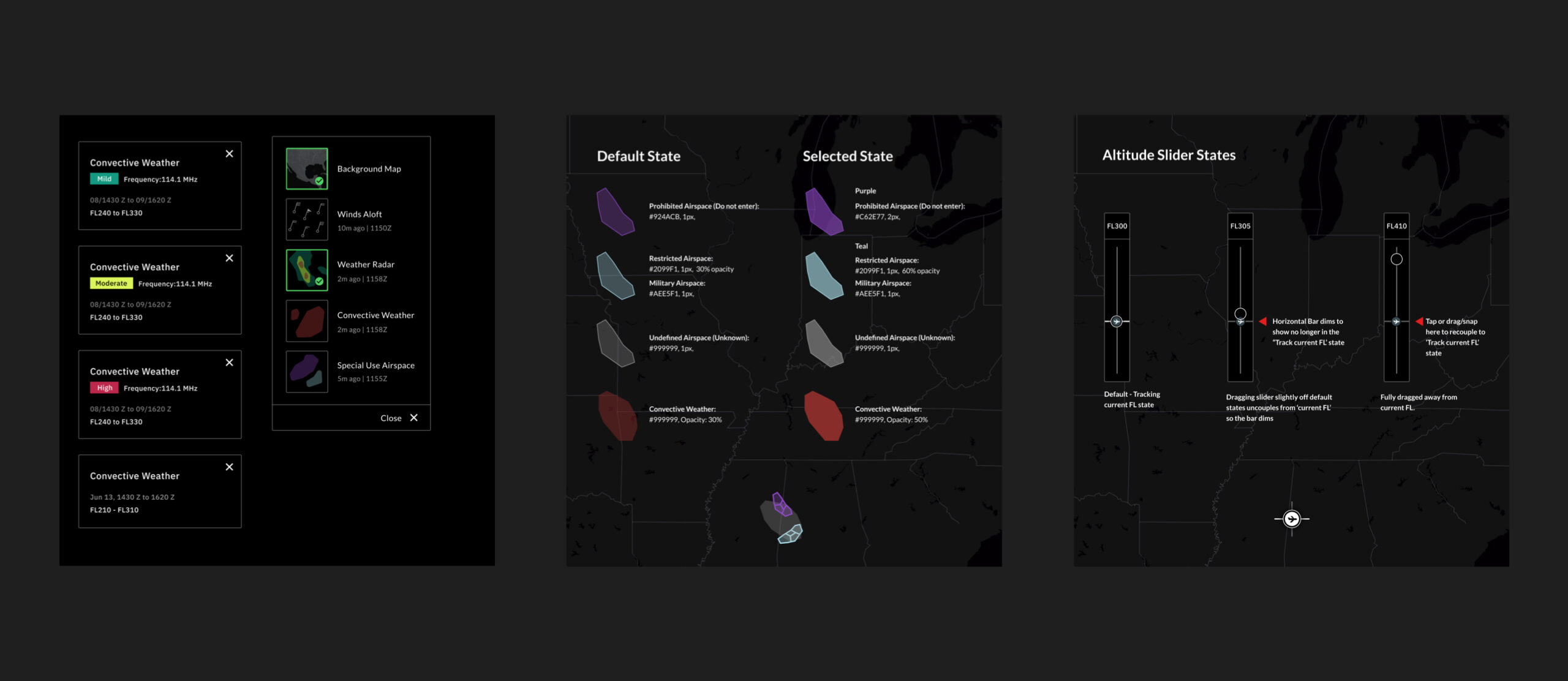
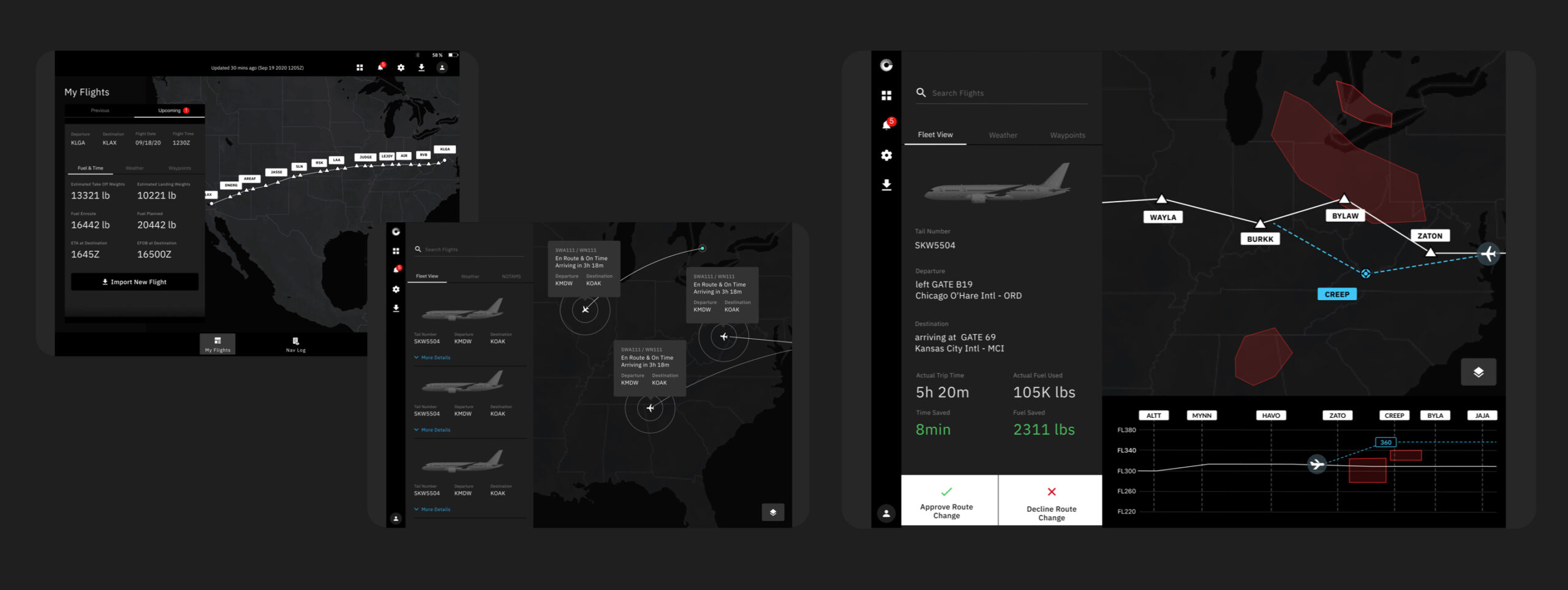
Future vision
Towards the end of the project, I explored how FPO could extend beyond the cockpit, imagining an integrated experience between dispatchers and pilots. The goal was to streamline communication by enabling dispatchers to monitor the fleet and receive notifications when pilots needed route change approvals.
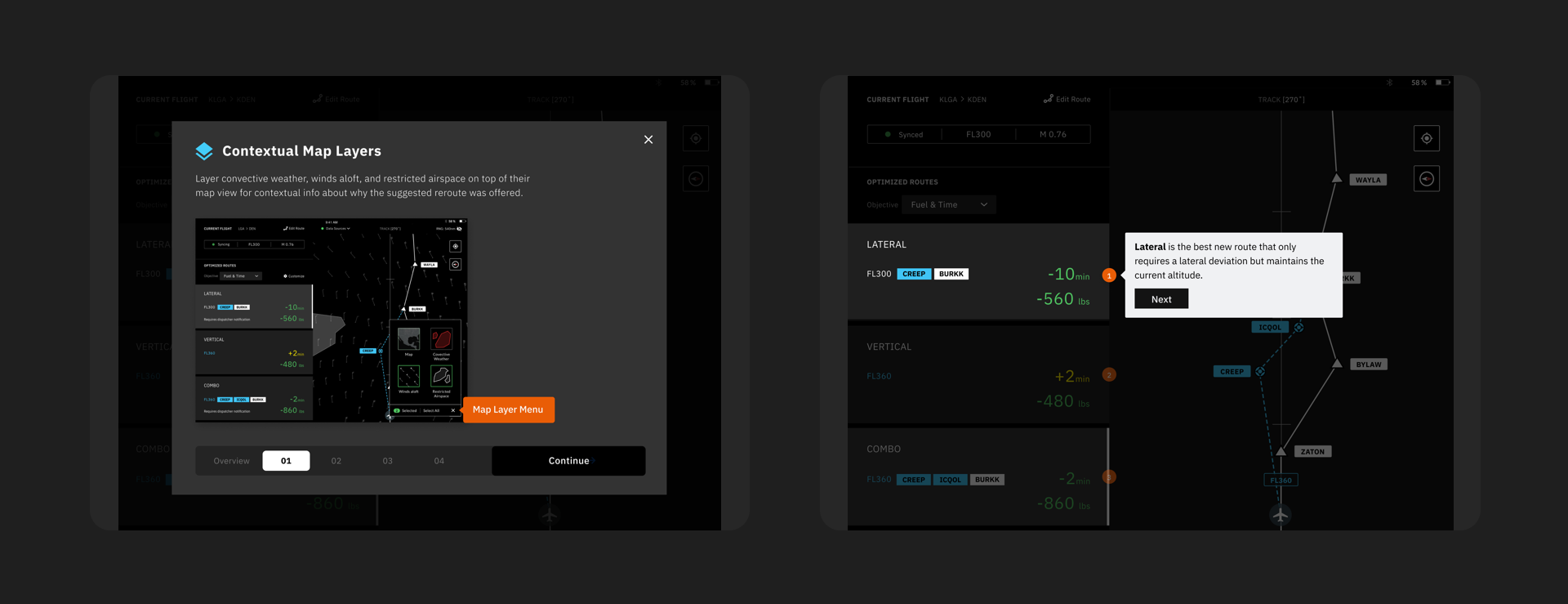
Shown above: [left]Onboarding tutorial for pilots [right] Instructional tooltip that appears during an interactive tutorial
Design Team:
Anya Palkowski - Product Manager
Micah Lindenberger - Art Direction / Product Design / Research
Jill Haefele - Interaction Design / Strategy / Research
Ali Sugarman - User Researcher
Tae Yang - Product Design / Prototyping
Lisa Mitchell - Project Manager
Project Team:
Jill Haefele - Interaction Design / Strategy /Research
Micah Lindenberger - Art Direction / Product Design / Research
Tae Yang - Product Design / Prototyping
Ana Lopez - Product Design
Lisa Mitchell, Madeline Winer, Mary Rockwell, Anya Palkowski, Dan Levine
Micah Lindenberger
Product Design
Interaction Design
Art Direction
Creative Strategy
Illustration
Micah Lindenberger
Product Design
Interaction Design
Art Direction
Creative Strategy
Illustration
Find me in Los Angeles, CA
micahmicahdesign@gmail.com
Designing machines & systems since 2005
Ciao.
Built in Brooklyn, NY ©2024